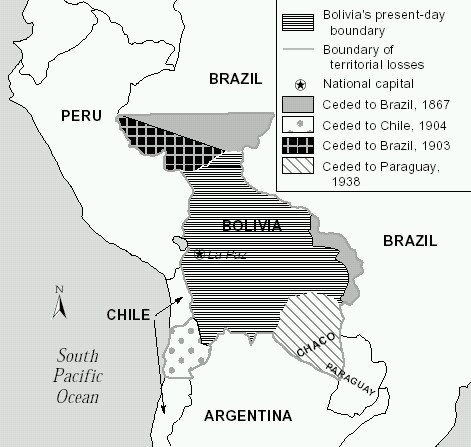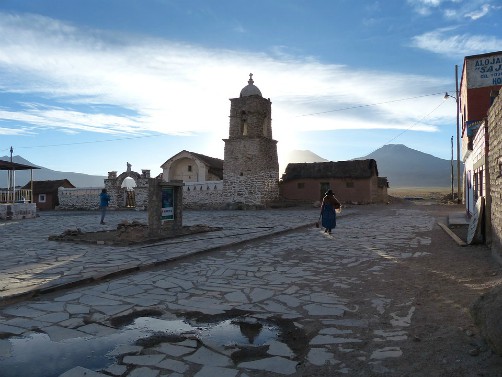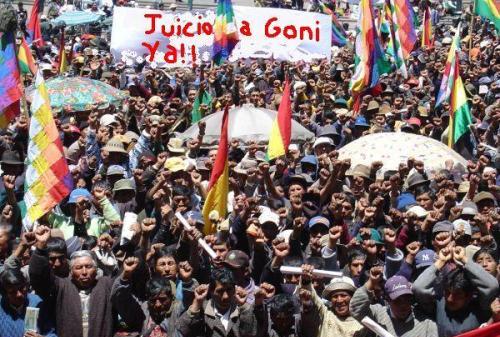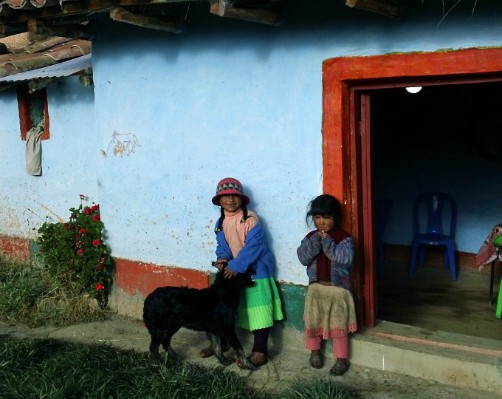|
History of Bolivia: Recent History 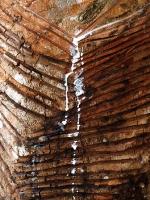
Recent History of Bolivia: 1900 - 1950 A.D. This section on Bolivia's most recent history begins in 1903, when the relatively unknown state of Acre to the North, along the Acre River in the Amazon region, became valuable during the rubber boom because of its wealth of rubber producing trees (photo). Acre was convinced by Brazil to secede and was given over to Brazil by President José Manuel Pando in exchange for indemnity, after signing the Treaty of Petrópolis. (Return from Bolivia's Recent History to Bolivia's Colonial Era and Post-Colonial history pages if you haven't already read them).
Bolivia's recent history has been just as unorganized as all preceding periods. Between 1920 and 1923 several revolts and rebellions by indigenous peoples and miners were violently suppressed. However, it was clear that the level of discontent amongst these groups, who even today comprise over 50% of Bolivia's population, was high. They have influenced Bolivia's recent history profoundly due to their discontent over their social exclusion. Between 1932 and 1935 Bolivia went to war with another of its neighbors, Paraguay, over an area in Southeastern Bolivia called the Chaco, thought to be rich in petroleum. As a result of the Chaco War, Bolivia lost another large portion, nearly 100,000 square miles, of its territory. This was a great blow to the economy in Bolivia, but resulted in improved social consciousness and better working conditions for laborers, as the ruling class was discredited. At the time it declared independence, Bolivia was much larger than it is today. The country had a seacoast, part of the Amazon to the North of the present-day departments of Beni and Pando, and much of the Chaco region to the Southeast. However, the country has been politically unstable since its inception and since 1825 has lost more than half its territory to its neighbors. Today, Bolivia is landlocked and is approximately the size of Texas and California combined (or roughly three times the size of Montana). This map shows Bolivia's present territory, as well as the portions of territory lost to its neighbors throughout its history.
During its recent history, in World War II, Bolivia experienced an economic boom due to worldwide demand for tin, but this was short-lived as in 1943 Bolivia declared itself at war with the nations of the Axis in support of Germany. (Hitler, as can be read in the books he authored such as Mein Kampff, had a plan to conquer South America and began by sending economic aid and Nazi “advisors” to Bolivia. Because Bolivia is centrally located in the heart of South America, his plan was to indoctrinate and conquer, irradiating outward from Bolivia to the surrounding countries. After Germany’s defeat, many of these German Nazis remained in South America, the most famous of these being Claus Barbí who obscurely remained for decades in Argentina and was finally captured in Bolivia in the 1980s). This economic boom was short lived as rising world prices and miserable working conditions for miners led them to strike. They were violently suppressed. In December, 1943 the Movimiento Nacionalista Revolucionario (Nationalist Revolutionary Movement), also known as the MNR engineered a successful revolt. However, the regime was not acknowledged by other nations, except Argentina. In 1946, the leader of this government, Major Gualberto Villarroel, was hanged from a lamp post. Recent History of Bolivia: 1950 - TodayIn 1952, the MNR, a socialist party at the time, installed Victor Paz Estenssoro, who had been in exile. He was returned to Bolivia to become president and installed a number of social and economic reforms including a major agrarian reform in which land was taken from the wealthy and redistributed among the poor, nationalization of the tin mines, and the introduction of universal suffrage, providing voting rights for all over 18 years of age, among other social and educational reforms. The MNR remained in power for the next 12 years with Victor Paz Estenssoro and, in 1956, Hernán Siles Zuazo, as presidents. During the following 20 years of its recent history Bolivia was governed by a series of military coups and elected governments, all of which were short-lived. In 1964 Vice-President Rene Barrientos Ortuño staged the military coup that overthrew Paz Estenssoro. The regime sent the military to take over the mines. In 1966 elections, Barrientos was elected president. During this time, Argentinean Ernesto “Che” Guevara and his band of guerrillas were present in Bolivia and led an uprising by peasants in 1967 during which time he was killed in Bolivia after being betrayed by peasants. (For many years his grave and body were never found). In 1969 Barrientos was killed in a plane crash and Vice-President Luis Adolfo Siles Salinas took over but was soon deposed by the army in support of General Alfredo Ovando Candia who nationalized the Gulf Oil Company facilities in Bolivia. In 1970 a military coup was staged and Ovando was overthrown. However, this regime lasted but one day and was promptly overthrown itself by another military group led by General Juan José Torres. Torres undertook to improve Bolivia’s relations with the Soviet Union, which caused the country’s relations with the US to suffer. In view of the high level of public disorder at the time, in 1971 the military, the MNR and others joined forces to stage another military coup and installed Colonel Hugo Banzer Suárez as president. In 1974 he planned to allow for elections, then postponed them as a result of a coup attempt against him. Because of great rifts in the coalition that had put him in power, he replaced civilian members of government with members of the military and suspended all political activities including elections. He closed all universities and arrested his opposition. Surprisingly, this was a prosperous time in Bolivia's recent history. During the 7 years he governed Bolivia’s economy grew greatly; most notably, Bolivia’s railways and aqueducts were greatly extended and improved during this time; however, his government was accused of human rights violations and he was forced to allow for elections in 1978.
Between 1978 and 1980 there were several short-lived governments. There were accusations of election fraud and several coups. In 1980 General Luis García Meza staged a violent coup and took power. His government was famous for its human rights violations, drug trafficking and mismanagement of funds; therefore, the US and European countries banned all aid to Bolivia. In 1981 General Celso Torrelio Villa forced García to resign and replaced him. García Meza went into exile. (Years later García Meza was convicted of many crimes including murder and was extradited from Brazil, where he had been found. Since 1995 he has been in a prison in La Paz, serving a 30 year sentence). Throughout Bolivia’s recent history, several of its important leaders have gone into exile and few have been brought to justice. The economy worsened and in 1982 Torrelio himself resigned. A military regime convoked the Congress to choose a new president, and leftist Hernán Siles Zuazo was again installed as president, 22 years after his first term in this post (between 1956 and 1960). He was, however, a weak leader and his government was also accused of mismanagement of funds. He served between 1982 and 1985. In 1985 Hernán Siles Zuazo resigned after a general strike by laborers and a coup attempt against him. Elections were held, but no candidate received a clear majority; therefore, in accordance with the Bolivian Constitution, Congress chose contender Victor Paz Estenssoro as the new president, his fourth term in this post. The country was in economic crisis at the time he took office. Social unrest was at its peak, workers staged strikes constantly, and the drug trafficking was at an all-time high. The economy plunged and inflation rose to an unprecedented 24,000%! During the next four years, under Paz Estenssoro the country returned to economic and social stability. The military was not involved in politics during this time and his government was never accused of human rights violations. However, in 1986 the tin mines are nearly depleted after nearly 500 years of mining and the world tin market collapsed. Tens of thousands of miners lost their jobs (were laid off from the government-owned mines) and marched into La Paz, leading to a short period of social unrest. In 1989 leftist Jaime Paz Zamora was elected president by Congress (again, because during the election no candidate had received a clear majority of votes) and entered into a power-sharing pact with former dictator Hugo Banzer. Paz Zamora, a Marxist, governed with a relatively pragmatic style, continuing the economic reforms begun by Paz Estenssoro. His term was however, not completely peaceful. He tolerated no “domestic terrorism” and incarcerated several members of opposition groups. In 1993 Banzer was set to run in the presidential race but withdrew. Gonzalo Sánchez de Lozada, reared and educated in the US, a mining entrepreneur and former planning minister, was peacefully elected president. During the following four years under Sánchez de Lozada Bolivia’s great wealth of petroleum and natural gas fields in eastern Bolivia, as well as its telecommunications system, airlines, railroads, and electric power plants were capitalized (which means privatized, or opened to foreign investment). Dozens of US and European countries invested hundreds of millions in Bolivia to explore for (and produce) gas and oil once the new Hydrocarbons Law had been passed in 1996, in exchange for 50% ownership in these industries. The government directed all revenues into a pension system (called social security) for the general public, rather than the State Treasury. Between 1994 and 1996 there were some violent protests against this. In 1997 Hugo Banzer ran for election again and is this time elected president. In 1998 he notified the United Nations that he would commit to eradicating all drug trafficking in and from Bolivia by the end of his term in 2002. By 2000 he had announced coca plantations had been almost totally eradicated. This led to economic instability in some regions of Bolivia that throughout recent history have greatly depend on coca and resulted in protests and clashes (and a brief declaration of state of emergency in April 2000). However, it also led to a feeling of general political stability amongst foreign investors and over the following three years trillions of cubic feet of natural gas (nearly 54 trillion in proven reserves) were discovered in Santa Cruz and Tarija, as were enormous oil fields. For the first time in history, Eastern Bolivia had a natural resource everyone wanted and natural gas sales helped to finally develop this historically abandoned region. Natural gas became Bolivia’s primary source of revenue at this point. Banzer provided continuity to the free market policies of Sánchez de Lozada and Bolivia underwent an economic boom for the next 4 years. Banzer ordered military and police units to completely eradicate all coca fields in the Chapare region (department of Cochabamba) leading indigenous groups to protest, primarily under the leadership of Evo Morales Aima. However, indigenous groups and the lower classes staged large-scale protests and demonstrations near the end of his term again, in September and October of 2000, claiming they were not benefiting during this period of prosperity, forcing Banzer’s government to grant economic concessions to some indigenous groups although it refused to discontinue its coca eradication programs. In August of 2000, one year prior to the end of his term, Hugo Banzer Suárez developed cancer and resigned from office. His Vice-President, US-educated Jorge Fernando “Tuto” Quiroga Ramirez, took over on August 8, 2001. (Banzer died in May of 2002). In 2002, regularly scheduled elections were held in Bolivia and Gonzalo Sánchez de Lozada was once again elected president of Bolivia. Surprisingly, his main rival was socialist Evo Morales Aima, an indigenous leader and representative of the coca growers, who led a strong opposition. Sánchez de Lozada promised to reactivate the economy and create jobs, fight corruption and ensure social inclusion. However, in February of 2003 Sánchez de Lozada’s government proposed an income tax increase (designed to reduce Bolivia’s deficit levels to levels demanded by the International Monetary Fund) that resulted in violent protests in which more than 30 people were killed.
In September and October the government proposed exporting natural gas to global markets through ports in Chile, Bolivia’s rival since losing its seacoast to its neighbor. Further protests ensued in which 80 were killed and hundreds more were injured. President Sánchez de Lozada resigned on October 17th and went into exile (he is now living in the US) and his Vice-President Carlos Diego Mesa Gisbert (a journalist and historian with no prior political experience) replaced him. In 2004 President Mesa was greatly opposed when he signed an agreement to export natural gas with Argentina, rather than Chile. Protesters demanded he resign. In August, an agreement was struck with Peru instead to allow Bolivia to export its gas through Peruvian ports. Large protests took place in Santa Cruz, now Bolivia’s largest city, and in La Paz. 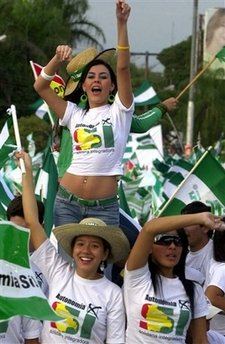
At this point the department of Santa Cruz, where most natural gas reserves are located, began to push for autonomy and was backed by the departments of Beni and Tarija. The Bolivian government spread rumors that the three departments might secede from the republic to form a new nation, but this was not the idea. In fact, what they wanted was for each of Bolivia's nine states to have some measure of self-governance, similar to the US but not a fully federal system. Since the discovery of oil and gas in this region, the economy of Bolivia has depended almost completely on the promise of revenues from these gas exports and losing this section of the country could result in financial ruin for the western Andean portion of the country. Today, the Department of Santa Cruz alone contributes nearly 40% of Bolivia's GNP. (Photo: marchandchronicles.blogspot.com) Currently, the Bolivian government is centralized. All income generated by the 9 departments is sent to La Paz where decisions are made as to how and where it should be allocated and used. These departments generate a very large portion of the nation's income but generally feel it isn't being allocated back to them fairly in the form of funds for infrastructure, investments, roads, health care, retirement pensions, and the like. Their request for autonomy has been viewed internationally as an effort by the rich eastern departments to avoid "sharing the wealth" with the western departments, most of which are extremely poor. In addition, it has been understood as an effort to separate completely from the remainder of the country. In fact, these departments languished abandoned by the government and in poverty throughout Bolivia's entire history until gas exploration recently began. The departments that form the Media Luna, or Half Moon (Santa Cruz, Beni, Chuquisaca and Tarija) insist that their request is for regional autonomy only, that they have no plans to separate from Bolivia and that they simply want a system that is not unlike that of the United States, in which there is a national government, but each state has it's own government as well and decides upon its own budget. Andean indigenous groups, led by Evo Morales and backed by labor union members, students of the state universities, and medical personnel staged continuous protests, demonstrations, road blocks, and strikes. The cities of La Paz, Cochabamba, and Santa Cruz were cut off from the rest of the country. The inability to transit left some cities without electricity, water, produce, natural gas and gasoline. Companies lost millions of dollars as their produce decayed in trucks blocked for weeks on the roads between Bolivia's major cities. The government lost as much in revenue from the taxes on these goods. In March of 2005 President Mesa chose to resign but Congress rejected his resignation. Mesa then requested early elections, but this was also rejected by Congress. In May manifestations, road blocks, and other actions by protesters brought much of the country to a standstill. President Mesa promised to hold a referendum (public hearing) on the issue of natural gas exports. He also promised to re-write the Constitution. However, in June, as protests continued, Mesa resigned and, according to Bolivian law, was replaced by the head of the Supreme Court, Eduardo Rodriguez Veltzé, as interim president until elections could be held in August. Elections were, however, postponed by an act of Congress until December 2005 at which time indigenous socialist leader Evo Morales Aima (head of the Movimiento al Socialismo - Movement Toward Socialism - party), won the presidential elections, backed by his Aymara and Quechua followers. He is the first person of indigenous descent to hold the post of president in Bolivia. Morales promptly replaced many ministers and cabinet heads with his own followers. Morales has promised to exert more government control over the country’s resources, especially Bolivia’s oil and gas reserves. He and his vice-president, Alvaro Garcia Linera, were inaugurated into office on January 22, 2006. He is a firm opponent of the coca eradication programs. 2006 – 2018: Closely advised by Fidel Castro, dictator of Cuba, and Hugo Chávez, (the recently deceased president of Venezuela), Evo Morales nationalized the country’s energy industry once again, giving foreign investors six months to renegotiate their contracts with the Bolivian government or leave the country. In June elections were held to form a new assembly to re-write the Constitution. Morales claimed victory in this assembly and nominated many of his indigenous followers to head this revision. The constitution was to include a large-scale nationalization program for several industries, rumored to include the mining, telecommunications and transportation industries as well as a new land redistribution program, similar to that of the Agrarian Reform of 1952. The departments of the Media Luna continued to push for autonomy and in May and June 2008 held public referendums on the issue, in which over 80% of the population of each department voted in support of autonomy. President Morales then declared a national referendum on August 10, 2008 to vote upon his ousting (he wasn't) along with the prefects (governors, they weren't either) of 8 of Bolivia's 9 departments. The prefect of Chuquisaca (Sucre) was not included in this as she had only recently been elected. A majority of Bolivia's population does not believe changes in authorities is the solution in a country that is more divided by social, cultural and geographic lines now than ever before. In February 2009 Bolivians voted on a new national constitution. It passed by just over 50% (it did not pass in Bolivia's 4 Eastern-most states). However, the new constitution theoretically include and guarantee autonomy for ALL of Bolivia's 9 states. The governors of the 3 "opposition" states were also re-elected with record voter turn-out in their favor and this greatly frustrates the government of Evo Morales, which is doing everything in its power to find a way to oust them. Even though it approved autonomy in the constitution, it contradictorily claims the governors illegally held the autonomy referendums and has filed lawsuits against them in an attempt to put them in jail, thus clearing the way to replace them with someone more to the government's liking. Eastern and Western Bolivia continue to be greatly divided along very different cultural and political lines.
Despite some advances made in terms of poverty alleviation and the economy, politically Evo Morales' Socialist regime is dropping in popularity as it becomes ever more clear that he intends to stay in power, even if unconstitutionally. An attempt was made to change the constitution again to allow Morales to run for president perpetually. This was met with great resistance from the general population who, during a referendum, voted against allowing it. However, the government then stated it will not respect the referendum and Morales is preparing to candidate for yet another term (unconstitutionally this time), hoping to stay in power through at least 2025. After 20 years of relative democracy, Bolivia seems set to undergo some major changes that have created a great deal of tension, concern and uncertainty once again, both nationally and internationally, with many now comparing the path Bolivia is taking to that of Venezuela. Have you read all of Bolivia's history?Bolivia's Ancient (Pre-Colonial) History Pando La Paz Oruro Potosí Chuquisaca     |
